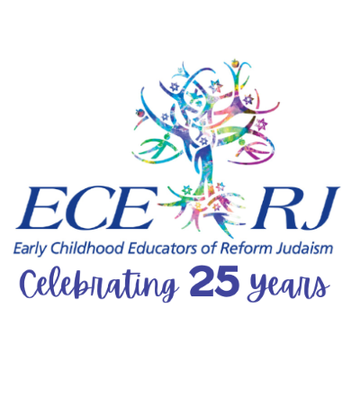Activity
-
Andy Brenits posted an articlePassover is just around the corner. many teachers are searching the internet, social media, books, a see more
It may be Purim, but as teachers, we are always thinking of the next holiday Passover is just around the corner. The first Seder is April 22nd to be exact. I am sure, like myself many teachers are searching the internet, social media, books, and other resources looking for fresh ideas to bring to the classroom. Search no further! We have put together a list of Passover resources with activities for the classroom and background information for the holiday.
For the Classroom
- Torah Godly Play -video
- Bringing Passover to Life Through Play by Jonathan Shmidt Chapman is a nationally recognized Jewish Educator and Theater Artist
- The Story of Pesach in Loose Parts - slideshow
- Passover Themed Activities Hands on learning for the classroom by Mass Audubon Early Education
- Loose Parts - Passover - Passover with 3 year olds Kinetic sand w pyramids, baby Moses, Red Sea exploration, and making paper mache’ baskets on half coconuts OFJCC Ulpanon of Palo Alto- Hebrew Program – Lital Raz
- Jewish Education Project: Early Childhood Passover Ideas and Resources (Webinar)
- PJ Library Passover: River Ride
- PJ Library Interactive Family Haggadah
- Hands-on Ancient Egypt: Israelite Mud Bricks for Kids
Background Information
- The Fifth Question-How Do We Help Children Make Sense of Passover?
- URJ: What are Pilgrimage and Festivals? Three Major holidays mentioned in the Torah: Passover, Shavout and Sukkot.
Background information on Miriam
- Welcoming “Guests”, Old and New, Passover Seder: Elijah, Miriam, and an Orange
- My Jewish Learning: Miriam’s Cup
- Miriam's Cup: A Supplemental Reading for the Passover Haggadah
-
Andy Brenits posted an articleSchool is starting or has only just begun. Everything is new. We don’t know the children. We don’t see more
School is starting or has only just begun. Everything is new. We don’t know the children. We don’t know the parents or guardians. We don’t have a sense of the group yet. AND WE HAVE TO TEACH ROSH HA-SHANAH AND YOM KIPPUR RIGHT AWAY!!
Wait. Stop and smell the honey.
Remember what we know about learners, young and old.
- Our priorities in the beginning are to help our students to become comfortable in the classroom and to begin building a classroom community.
- A curriculum has to be meaningful and developmentally and chronologically appropriate.
- Confusing children is never a good idea. What is learned when stories, songs, activities, projects, etc. are all jumbled on top of one another?
- If a child won’t “learn” what we are teaching, why are we teaching it?
- The world will not end if a child does not make a New Year’s card this year.
Rabbi Tarfon taught: “It is not your responsibility to finish the work, but you are not free to desist from it either” (Pirkei Avot 2:16).
Rather than a crisis, the high holidays and the start of the year arriving so close together is an opportunity to examine our teaching. What is our vision? What are our goals? Are we a closet teacher? A closet teacher has a box in the closet for each holiday and a predetermined plan that is the same year after year. Thinking outside the box literally can be refreshing and restorative.
So Rosh ha-Shanah is right after the start of school? That’s great! The question for us as educators has always centered on what we want the children to know about Rosh ha-Shanah (and the holidays that follow). What is important for students of any age to know this year? What is possible given the limited number of classroom days in September? What is reasonable? And most importantly, what is the focus?
First, it is important to embrace the fact that this will not be the last time our students learn about Rosh ha-Shanah (RH). Instead of anxiously listing everything you could do, consider the essential elements of what we want our students to remember about RH as they continue to build their own knowledge and connections this year. Remember, less is more. Choose a narrower focus. Reflect on one theme. And then, do less. Do it well. Do it with deeper meaning.
To begin, consider The New Year and what “new” means. Everything is new to our younger learners right now, isn’t it? They are wondering about what will happen this year. How can we provide the most meaningful introduction as they begin this journey with us?
Here are a few themes to get you started:
- Sweetness. Why are we eating honey and hallah with raisins and honey cake? How is the concept of “sweet” relevant to the sensory experience of a learner?
- The birthday of world. Why does the world have a birthday? How old is the world? What present does it want? What are Jewish “gifts” we should offer the world?
- New things (shofar, round hallah, Torahs dressed in white). Who is the shofar calling? Why is the hallah round? What is the symbolism of Torahs and clergy dressed in white?
- Celebration. Something important is happening in our family and in our community. How are we all a part of it? Why do we come together to celebrate?
Necessity is the mother of invention. The calendar this year is not a cause for panic but an opportunity to take the lessons of the New Year to heart. We are called to self-examination, a heshbon nefesh. Being a Jewish educator is a part of who we are. Our students deserve the same consideration and self-reflection that we give to the rest of ourselves at this time.
Shanah Tovah,
Idie Benjamin, Program Specialist/Career Advisor, Westchester, NY
Dale Sides Cooperman, Director, Congregation Albert, Albuquerque, NM
- Karen Wasserman, Jodi Gladstone, and Andrea Paskoff like this.


